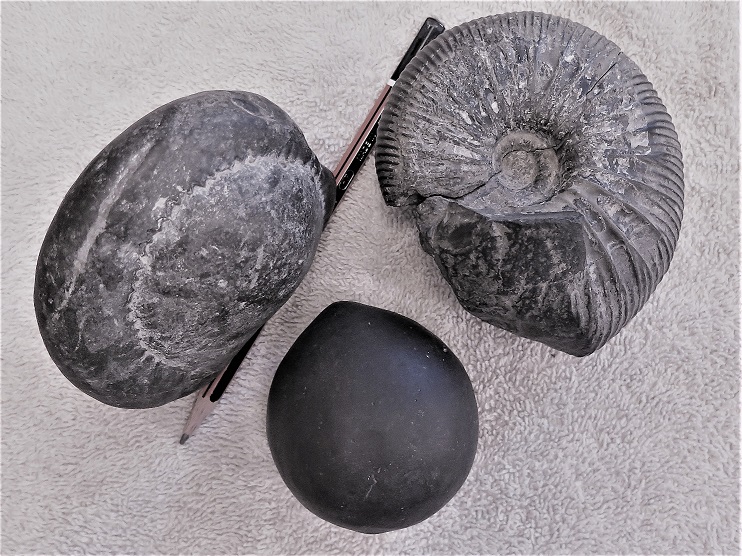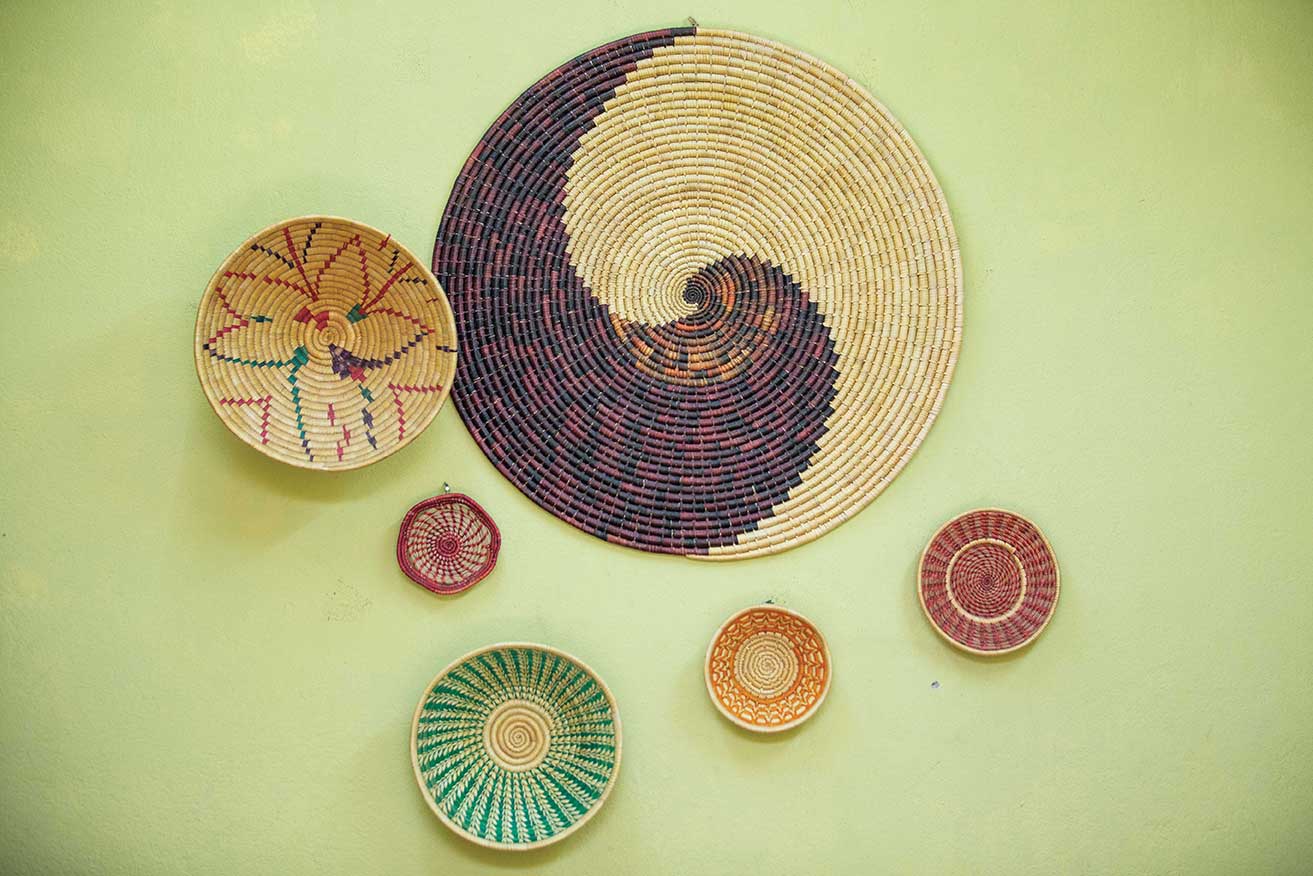The Saligrams of Muktinath
When the British mountaineer-explorer H.W. (Bill) Tilman visited the pilgrimage shrine of Muktinath in 1950, he was among the first Westerners to go there. It is located at nearly 12,200 ft. in northern Nepal’s Mustang District, at the head of the tributary Jhong River. It has a commanding view of the arid, windswept upper Kali Gandaki River valley and the white north face of Dhaulagiri Himal. Tilman was fascinated by Muktinath, noting that it “owes its sanctity to the presence of the thrice-sacred ‘shaligram’... regarded as emblems of Narayan or Vishnu.”
Muktinath was once known as ‘Salagrama’, derived from sacred saligram stones, the black ammonite fossils that are found here in abundance. Saligrams have long been venerated by Hindus as sacred objects.
“On the banks of the Gandaki, at Muktinath, is a precipice, from which the river is supposed to wash the Salagrams or black stones, which are considered by the Hindus as representatives of several of their deities... They are of various kinds, and accordingly represent different deities. Pilgrims, who have been at the place, say that the stones are found partly in the precipice, and partly in the bed of the river, where it has washed down the earth. On account of its containing these stones, this branch of the river is usually called Salagrami, and the channel everywhere below Muktinath, until it reaches the plain of India at Sivapur, abounds in these stones.
“All the Salagrams consist of carbonate of lime, and are in general quite black, but a few have white veins. Their colour is probably owing to some metallic impregnation, which also occasions their great specific weight. They rarely exceed the size of an orange, and they are rounded, I suppose, by the action of water. Most of them are what naturalists call petrifactions, and by far the most common are Ammonites, half imbedded in a ball of stone, exactly the same nature with the petrified animal. Others, which are reckoned the most valuable, are balls containing a cavity formed by an Ammnonite that has afterwards decayed and left only its impression, ...Typolithi Ammonitarum.” (Hamilton, 1971)
Ammonites are the fossil remnants of an extinct form of mollusk (Cephalopoda) with a coiled, flat, chambered shell. These creatures lived and left their remains under the prehistoric Sea of Tethys that once separated the supercontinents of Gondwanaland and Laurasia well before the continental collision that created the Himalayas.
“The shalgramu is black, hollow, and nearly round; it is found in the Gunduk River and is considered a representation of Vishnoo ... The Shalgramu is the only stone that is naturally divine; all the other stones are rendered sacred by incantation.” (Parlby, 1850)
It is believed that unbroken ammonites are the most valuable to believers, and that it is sinful to break them open it to expose the internal impression of the fossil. An inscription on stone near Muktinath’s Vishnu Mandir (temple) admonishes people not to break or sell fossils. The penalty for breaking this rule is to have one’s hands cut off!
“The smooth fossilized Salagrama stones ... are avidly collected and worshipped. Devotees drink the waters in which the salagram is washed, praying, ‘Narayan, you are the blessed ruler of the world; it is your pleasure to confer your blessings on all created beings. I drink this water in which your sacred feet have been washed that I may be cleansed of sin. Vouchsafe to pardon me, who am the greatest of sinners’.” (Anderson, 1971)
Travelers are also asked not to take ammonites out of the district. Nonetheless, they are collected, broken open and sold in Pokhara and Kathmandu as souvenirs, to believers and non-believers alike. Some people claim that some fossils contain gold, but don’t fool yourself?that ‘fool’s gold’ is merely fragments of pyrite or quartz crystal. Nonetheless, they heighten (a bit) the mystery that has attracted so much attention to Muktinath since ancient times.
Saligram/salagrama/shalgramu... is spelled many ways! This essay is adapted from the author’s article, ‘The Hindu pilgrimage to Muktinath, Nepal’ published in the journal Mountain Research and Development (May 1989). The quotes, as they appear here, are from H.W. Tilman, Nepal Himalaya (1952); F.B. Hamilton, An Account of the Kingdom of Nepal (1819); F.P. Parlby, Wanderings of a Pilgrim... (1850); and M.M. Anderson, Festivals of Nepal (1971).












